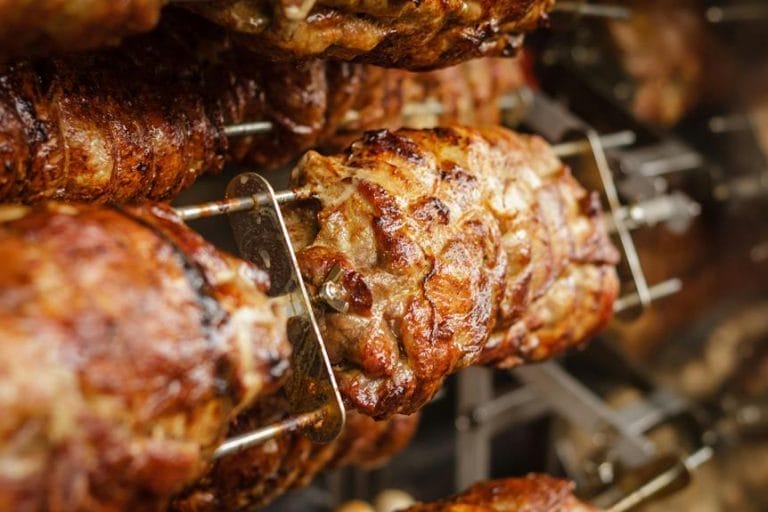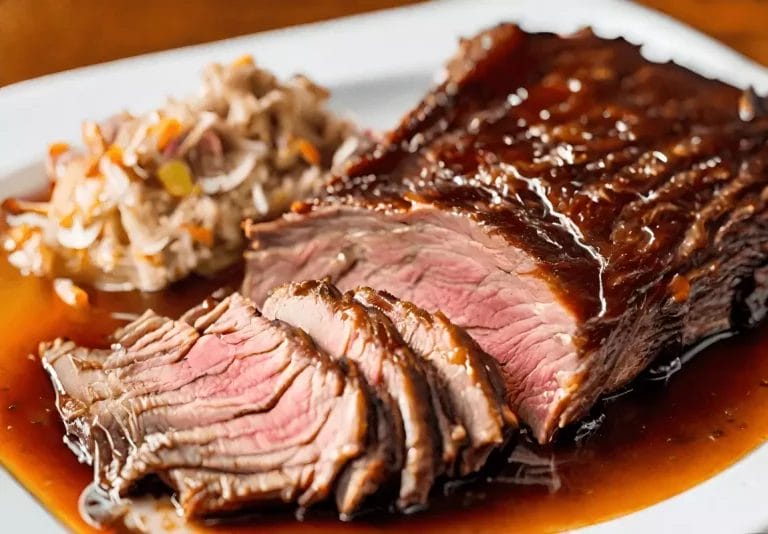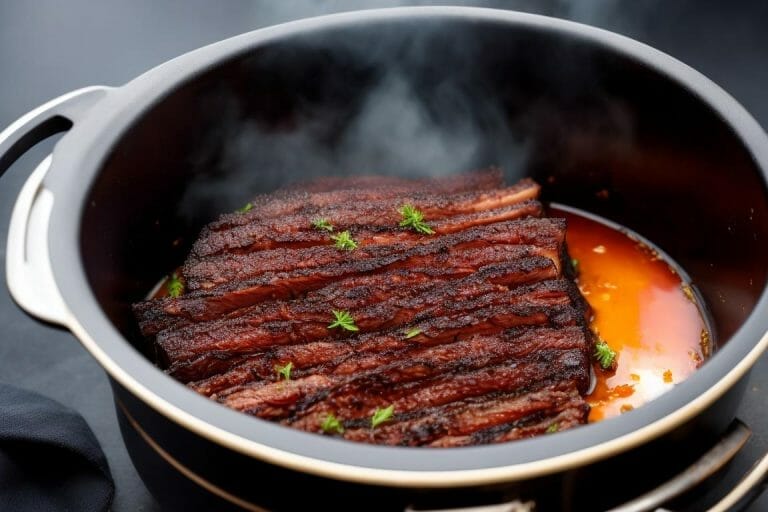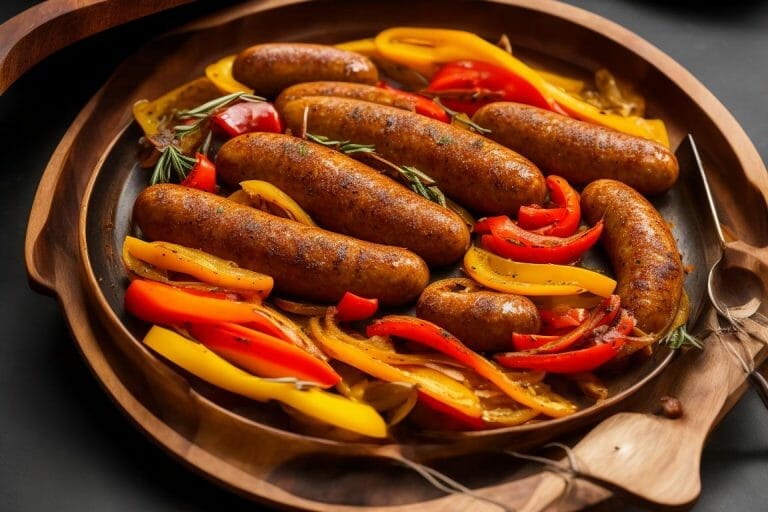How to Cook the Perfect Steak Long on a George Foreman Grill

So, you’re about to take your George Foreman Grill skills to the next level and create the most amazing steak ever. First things first, pick a nice, tender cut like ribeye or sirloin – those are always winners. Sprinkle on some salt, pepper, and your favorite spices, don’t be shy with the seasoning, you want that flavor to pop! Let the steak chill out and come to room temperature before you fire up the grill, that way you’ll get those killer grill marks we all love.
Now, once your grill is nice and hot, plop that seasoned beauty on there and let it sizzle away. Cook it for about 4-5 minutes on each side if you want that perfect juicy, medium-rare goodness. Oh man, just thinking about it makes my mouth water! And hey, don’t forget to let the steak rest a bit after grilling – that’s the secret to sealing in all those amazing flavors.
By following these simple steps, you’ll become a steak-grilling pro in no time. Trust me, once you master this art, every bite will be a flavor explosion in your mouth. So go ahead, get that steak on the grill and get ready for a taste sensation like no other. Enjoy every delicious moment, my friend!
Key Takeaways
- Preheat George Foreman grill on high for at least 5 minutes.
- Cook steak longer for well-done, aiming for 160°F internal temperature.
- Rest steak after cooking for juiciness and flavor.
- Ensure proper grilling time on a 500°F grill for desired doneness.
- Use high-quality cuts and season generously for best results.
Choosing the Right Cut of Steak
When grilling the perfect steak on your George Foreman Grill, selecting a cut like ribeye, sirloin, or filet mignon is essential for a tender and flavorful experience. These cuts are known for their exceptional taste and tenderness. Rib-eye steaks are popular for their rich marbling throughout, which enriches the juiciness and flavor of the steak when cooked.
Sirloin cuts offer a balanced mix of tenderness and beefy flavor, ideal for those who prefer a leaner option without compromising taste. Filet mignon, often referred to as the king of steaks, is celebrated for its unmatched tenderness that practically melts in your mouth.
To ensure a successful grilling experience, aim for a steak thickness of around 1 inch, as recommended for excellent cooking on a George Foreman Grill. Look for cuts with good marbling, as this fat distribution within the meat adds moisture and flavor during the cooking process. Choosing the right cut of steak is the initial step towards achieving a mouthwatering result on your George Foreman Grill.
Preparing the Steak

For a steak that’s primed to sizzle with flavor on your George Foreman Grill, the key lies in the meticulous preparation of the meat. Start by selecting a high-quality cut of steak such as ribeye or sirloin; these cuts promise ideal tenderness and flavor that will truly shine once grilled.
Make sure the steak reaches room temperature before cooking to guarantee even cooking throughout. Season your steak generously with salt, pepper, and any desired spices or marinades, enhancing its taste and creating a delicious crust when grilled.
Before cooking, pat the steak dry to remove any excess moisture. This step is essential for achieving a nice sear on the grill, locking in those flavorful juices. Once your steak is seasoned and dry, preheat your George Foreman Grill to the recommended temperature. This ensures that your steak will be cooked to perfection every time.
With the right preparation, your grilled steak will turn out beautifully cooked, juicy, and full of mouth-watering flavor.
Preheating the George Foreman Grill

To guarantee that your steak grills to perfection with mouth-watering flavor and beautiful grill marks, the initial step is preheating your George Foreman Grill to the recommended temperature. Here’s why preheating is vital for cooking the perfect steak on your George Foreman Grill:
- Preheat the George Foreman Grill: Plug in the grill and set it to high heat for at least 5 minutes to ensure even cooking.
- Optimal Temperature: Preheating helps the grill reach the ideal temperature for searing the steak and locking in juices for a delicious result.
- Grill Marks: Proper preheating leads to beautiful grill marks on your steak, enhancing both presentation and flavor.
- Consistent Temperature Control: The George Foreman Grill’s consistent temperature control relies on preheating to provide a consistent cooking experience and ensure your steak turns out just the way you like it.
Grilling the Steak

Get ready to step up your steak game by becoming a pro at grilling on your George Foreman grill. First things first, make sure to season your steak real good with your favorite spices. Then, fire up that grill and let it get nice and hot before you throw your steak on there.
Now, when it’s sizzling hot, carefully place your steak on the grill and get ready for that mouthwatering sear. Remember, you want to get that perfect medium-rare cook, so keep an eye on the time. Aim for about 4-5 minutes on each side for a juicy and flavorful result that will have your taste buds doing a happy dance.
Seasoning the Steak
Consider enhancing your steak’s flavor and tenderness by expertly seasoning it with a blend of salt, pepper, and optional spices or marinades before grilling on your George Foreman grill. Here’s how to season your steak for the perfect result:
- Use a Generous Amount of Salt and Pepper: Season both sides of the steak generously to guarantee a balanced flavor profile.
- Experiment with Optional Spices or Marinades: Try adding different spices or marinate the steak in Worcestershire or soy sauce for added depth of flavor.
- Ensure Even Coating: Make sure to coat the steak evenly with the seasoning to secure consistent juiciness throughout.
- Seal in Juices for Succulent Results: Properly seasoning the steak before grilling helps create a delicious crust and seals in natural juices, leading to a succulent outcome.
Preheating the Grill
Ensuring your George Foreman Grill is preheated to medium-high heat is essential for achieving a perfect sear and even cooking on your steak. Preheating the grill helps create those beautiful grill marks while sealing in the juices, providing ideal cooking conditions.
This fundamental step guarantees your steak cooks evenly and reaches your desired level of doneness. Below is a table summarizing the importance of preheating the grill:
| Importance of Preheating the Grill |
|---|
| Achieve a good sear |
| Ensure even cooking |
| Create grill marks |
| Seal in juices |
| Reach desired doneness |
Cooking Time and Temperature
To elevate your steak-cooking game on a George Foreman Grill, mastering the precise cooking time and temperature is crucial for achieving that mouthwatering medium-rare perfection. Here’s how to nail it:
- Aim for an internal temperature of 135°F for a medium-rare steak.
- Cook thinner cuts like ribeye or sirloin for about 4-5 minutes on the Foreman grill.
- Avoid overcrowding the grill to guarantee even cooking and proper searing.
- Close the lid during cooking to retain heat and cook the steak more efficiently.
Checking for Desired Doneness

To guarantee your steak reaches the perfect level of doneness, utilize a meat thermometer to gauge the internal temperature accurately. When cooking a steak on a George Foreman grill, it’s important to check the doneness of the steak using a digital meat thermometer.
For a rare steak, aim for an internal temperature of 125°F, while medium rare should reach 135°F, medium at 145°F, and well done at 160°F or higher. Insert the thermometer into the thickest part of the steak for the most precise readings.By monitoring the internal temperature, you can make sure your steak is cooked to your desired level of doneness.
Once the steak has reached the ideal temperature, it’s vital to let it rest before slicing and serving. Allowing the steak to rest after cooking on a George Foreman grill will enable the juices to redistribute within the meat, resulting in a more tender and flavorful bite.Remember, slicing the steak against the grain can further improve its tenderness and overall eating experience. By mastering the doneness of your steak, you can savor every delicious bite with confidence.
Resting and Serving the Steak

Rest the cooked steak before slicing and serving to allow the flavorful juices to evenly redistribute, enhancing its tenderness and complete dining experience. Here are some key steps to guarantee your steak is served perfectly:
- Resting: After cooking, let the steak rest for about 5-10 minutes. This allows the juices to redistribute within the meat, ensuring a moist and tender bite.
- Tenting: While resting, tent the steak loosely with foil. This helps retain the heat and allows the internal temperature to rise slightly, ensuring the steak remains warm when served.
- Slicing: When slicing the steak, cut against the grain. This technique breaks down the muscle fibers, resulting in a more tender and enjoyable eating experience.
- Serving: Serve the steak hot. Hot steak ensures that the flavors are at their peak, and the juices are still locked in, providing a delicious and satisfying meal for you and your guests.
Properly resting and serving your steak is vital to preserving its juiciness, tenderness, and flavor, making each bite a delightful experience.
Recommended Grilling Times

After mastering the art of resting and serving your perfectly cooked steak, the next step is to make sure you grill it for the right amount of time to achieve your desired level of doneness.
On your George Foreman grill, crucial is key to reaching that ideal rare, medium-rare, medium, or well-done steak. For a rare steak, aim for an internal temperature of 125°F by setting your grill to 400°F.
If you prefer a slightly pink center, cook your steak to 135°F for medium-rare on a 425°F grill. Those who enjoy a medium steak should target 145°F on a 450°F grill.
For a well-done steak, cook until the internal temperature hits 160°F on a 500°F George Foreman grill. Remember, preheating your grill is crucial for even cooking and that perfect sear.
Conclusion
So, let me tell you, cooking up the perfect steak on a George Foreman Grill ain’t no rocket science, my friend. It’s all about picking the right cut, prepping it just right, and grilling it with finesse. That’s the secret recipe for a juicy, mouthwatering steak every single time. Don’t forget to check for that perfect doneness, give it a little rest, and then savor every bite of your masterpiece. Stick to these steps, and before you know it, you’ll be grilling like a total pro!
So, here’s the deal, when it comes to grilling on a George Foreman Grill, it’s all about the basics done right. Start off by choosing a good quality cut of steak, like a ribeye or sirloin. Get that bad boy seasoned up with your favorite spices and let it sit for a bit to soak up all those flavors. Then, slap it on the grill and let it sizzle away to perfection.
Now, picture this: you’re standing there, smelling that delicious aroma wafting through the air, and you know your steak is cooking up just right. Use a meat thermometer to check for that ideal doneness – whether you like it rare, medium, or well-done. Once it’s cooked to your liking, take it off the grill, let it rest for a few minutes (patience is key here, my friend), and then slice into that juicy goodness.
And there you have it, my friend, the ultimate guide to grilling the perfect steak on your George Foreman Grill. It’s simple, it’s tasty, and it’s sure to impress your taste buds every single time. So, what’re you waiting for? Fire up that grill, get those steaks sizzling, and get ready to enjoy a meal fit for a king!





